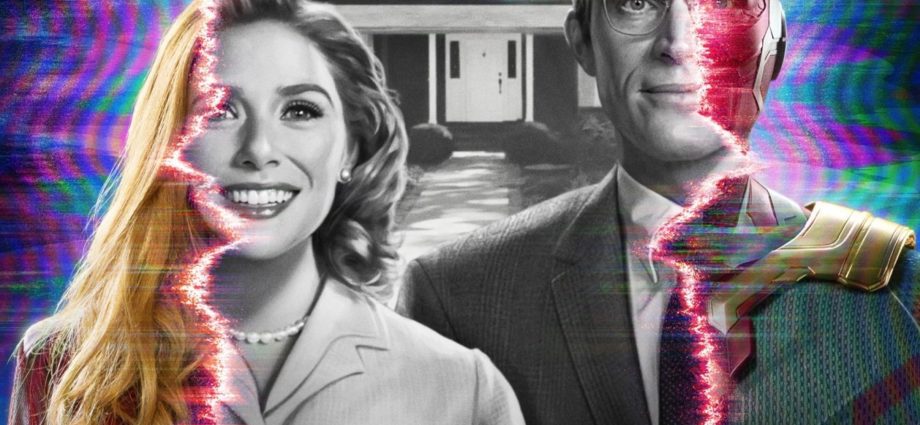The show “WandaVision” came out on Jan. 15th, and has been highly anticipated amongst critics and normal viewers alike. WandaVision is Marvel Studios’ first show on the Disney+ platform and the first Marvel Cinematic Universe (MCU) project released in almost a year—the first series in Phase Four of the MCU following the events of the Infinity Saga.
The show takes place in Westview and is formatted like a sitcom, reminiscent of old Disney Channel shows which themselves were based off of old-age television shows. The series takes place in a pocket reality which gradually transitions from the 1950s to the present day. The question that the viewer is prompted to ask themselves is where the main character, Wanda, is within the MCU and why she is there.
On its surface, the show seems ambitious, featuring Wanda, the Scarlet Witch, one of the MCU’s lesser-known and less mainstream characters who first appeared in “Avengers: Age of Ultron.” The decision to turn the show into a sitcom sets it apart from typical superhero movies which rely on action-packed fight scenes and visual effects.
However, the first three episodes felt lackluster and shone a negative light on the show as a whole. The script does not feel creative, and the use of weak one-liners does not bring the same comedic relief as those used in other MCU movies like “Thor Ragnarok.” Many of the scenarios the characters find themselves in also do not seem exciting, and there are only so many one-liners they can use about how Vision, a protagonist in the series, is a robot before the novelty runs out.
On top of this, the pacing in the first few episodes of “WandaVision” is awfully slow. Each episode is about thirty minutes long, yet there are only a few moments within each episode that actually keep the viewer interested. I found myself wanting to skip forward in the episodes at times in order to get to the mysterious part of this half-mystery, half-sitcom series.
The moments that do contribute to the overall mystery of the series are executed well and are engaging. For example, at the end of the third episode, Wanda has an intense conversation with her next door neighbor, Geraldine, who is revealed to be S.W.O.R.D. agent Monica Rambeau, which results in her expulsion from Wanda’s pocket reality. Nonetheless, these scenes are spread out too thin across the series—I found the first twenty minutes leading up to the ending bland, and were it not part of my job to finish and review this series, I would have stopped watching.
In general, I feel like Disney as a whole has been too reliant on nostalgia to make money. The main selling point of this television series is to bank on the nostalgia of old sitcoms from the past fifty years. Through recent years, it seems as if Disney as a company has relied on nostalgia to market many of their movies and shows—these include the live action remakes of classic animations, and the new Star Wars sequels. People who are looking to watch “WandaVision” expecting that it will expand on the lore of the MCU will likely be disappointed because that is not the main point of the series—initially, at least.
As a show that only had a new installment once every week (it is now complete), the first three episodes of “WandaVision” have not shown me any reason to believe that the Scarlet Witch and Vision should be anything but supporting characters in the MCU. “WandaVision” did not leave me waiting on the edge of my seat for the next episode like another Disney show, “The Mandalorian.” However, Marvel does deserve applause for trying something new, and I hope the proceeding episodes exceed the low precedence set by the first three. Although the series itself may not be appealing to me, I would still suggest watching it as it will likely improve as I finish the rest of the series, and especially because it is canon to the Marvel Cinematic Universe.

